WE ALL NEED a little help from time to time. Heck, some of us need a fair amount of help on the regular. Does that mean we’re failing, whether personally or professionally? No. It just means we aren’t as far along as we’d like to be in certain areas.
With this in mind, we asked the PETS+ Brain Squad, our 1,200-strong survey group of independent pet retailers and service providers, to tell us where they most need help in their business. Some members took us quite literally, asking for funding for new signage or to physically make over an entire department. Sorry to disappoint! As much as we’d like to swoop in like Jon Taffer or Gordon Ramsey or Tabatha Coffey, our budget does not allow.
Instead, we grouped similar requests for help into 10 main categories and reached out to industry experts and squad peers who have found success in the particular areas where members say they struggle. Here you’ll find their heartfelt advice — and in some cases, tough love — for five of those challenges: attracting and retaining customers, increasing sales in a small space, creating a thriving cat department, building a cohesive brand, and boosting self-wash revenue. We’ll start to tackle the five remaining categories in the Jan-Feb 2024 issue, in a new regular column inspired by this story. Stay tuned for more!
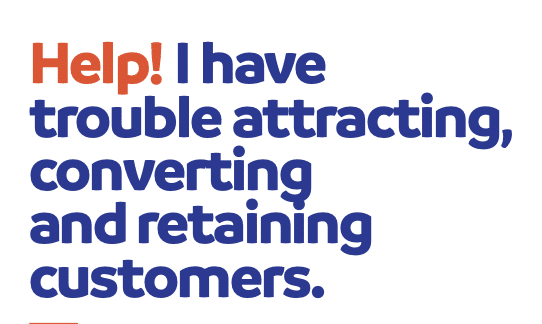
For solutions to this problem, which quite a few business owners reported having, we turned to Candace D’Agnolo, founder of Pet Boss Nation. She opened and sold three highly successful businesses — making a seven-figure exit — before becoming the top business coach for pet indies in the U.S. She read through all of the requests in this area and offers this insight and advice:

Candace D’Agnolo — This pet business coach provides tough love and caring support.
“Marketing a business seems to be the puzzle many small business owners can’t solve. From ‘I’ve tried everything’ to ‘My customers don’t like promotions’ to ‘After decades, people still don’t know we’re here,’ I’ve heard it all. Honestly, it all sounds like excuses.
“My tough love to you is … you haven’t tried everything, and what you’ve tried isn’t working. You have two options: Improve your skills (this takes time) or pay someone to help you (this takes money). Both need a strategy and consistent, long-term execution. Even then, there are no guarantees. It can take a while to find what works. Plus, marketing is always evolving. This is why it’s much easier when you learn to love it (OK, liking it is good enough), so you can keep sharpening the tools in your marketing toolbox.
“At PBN, we ask our clients to evaluate themselves in three key areas of marketing:
- Attraction — attracting and building your audience
- Conversion — turning lookers into buyers and increasing their purchase amounts
- Retention — increasing a customer’s visit frequency so they become your best word-of-mouth marketing and a great customer for the lifetime of their pet and pets to come
Ask yourself, “How do I stack up in each area?” Then use these tips from D’Agnolo to improve where needed.

Work on your www. “One of the first areas to focus on is your website. This is the No. 1 place where potential and current customers can learn all about you. There you can control the message and position exactly what they see first. The problem is, too many pet pros rely on a Facebook page only. Or they have a dated website with poor photos, illegible fonts, missing information and the biggest problem … it’s not mobile friendly. There are many free and paid website resources that can boost your online image, such as Wix, Canva, Shopify, SquareSpace, through your P.O.S. or custom site creators.”
Get social. “I also notice pet pros who haven’t posted on any social media channel in months! Seriously?! Or they post a lot, but it has nothing to do with their business. I’m so confused with this one, in particular. It tells me as a consumer that they like to promote others more than themselves, so they must not be interested in hearing from me, their ideal customer. Post original, authentic content about your business. Use photos and videos to paint the picture of why people should buy from you or engage your services.
Pick a social channel where your customers spend time. Learn everything you can about it and post engaging, valuable content every single day.”

Build that list. “Use social platforms, your website and other lead magnets to build your own email marketing list. Break your list into segments: current customers and potential prospects. They may get the same email message, or maybe you make different offers to each group. Email marketing isn’t just sending one newsletter a month. It includes an onboarding, welcome series of emails. You also can do a launch sequence with multiple emails for big events and promotions, send weekly emails with updates and important news, and run specials on the fly when you need to move merchandise or drum up business.”
Engage. “Looking for budget-friendly marketing? Do some outbound engagement within Facebook groups, Instagram DMs, with other pet or local accounts in your area, utilizing your personal page, utilizing Google Business Profile and NextDoor.”
Strategize and pivot. “Wondering why sales and promotions don’t work? Is the discount enticing enough for someone to take action? Did you advertise it well in advance and build excitement around it? Maybe your customers don’t like deals, but they want a customized or white glove kind of service. ”
D’Agnolo wraps up her advice with, “Overall, you need a marketing strategy and a budget, and you need to be intentional. Donating to auctions, attending community events, waiting for people to find you isn’t enough. Boost your online presence by encouraging more reviews, creating and sharing short videos weekly, engaging on other business and community accounts that have your ideal clients so you can be seen … and overall, just stop hiding online!
Advertisement
“It’s 2023! Millennials and Gen Z make up 49% of pet ownership. They are online. They like to find things quickly and easily. They give attention and money to brands they align with, believe in and value. You have all of that inside your business — you just need to start communicating it in your marketing.
“The reality is, no marketing strategy is the best. Nothing will save you overnight or even in the next month, but today you can start fresh. Begin building a stronger foundation, stay committed to your plan, and customers will follow, sales will build on each other, awareness will rise, and money will flow. You have to commit to being the influencer of your own business. You are its best spokesperson!”

Feeling like they’ve maxed out the sales potential of their space was a common sentiment heard from Brain Squad members with smaller stores. Square footage may not be the issue, according to Lyn M. Falk of Retailworks, Inc. She helps retailers of all sizes with store design, merchandising and display, and points to too much inventory as a common cause of stalled revenue growth.
Falk explains, “Retailers with less than 1,500 square feet of selling space often find themselves with too much inventory on the sales floor. Reasons? They love a lot of different product lines. Vendors have minimums. Customers want variety. But often the biggest reason is, they think that if they have all the products on the sales floor, customers will buy more. But what really happens is the space becomes overstocked and visually chaotic, shutting down customer brains so they actually see less, not more, and ultimately buy less.”
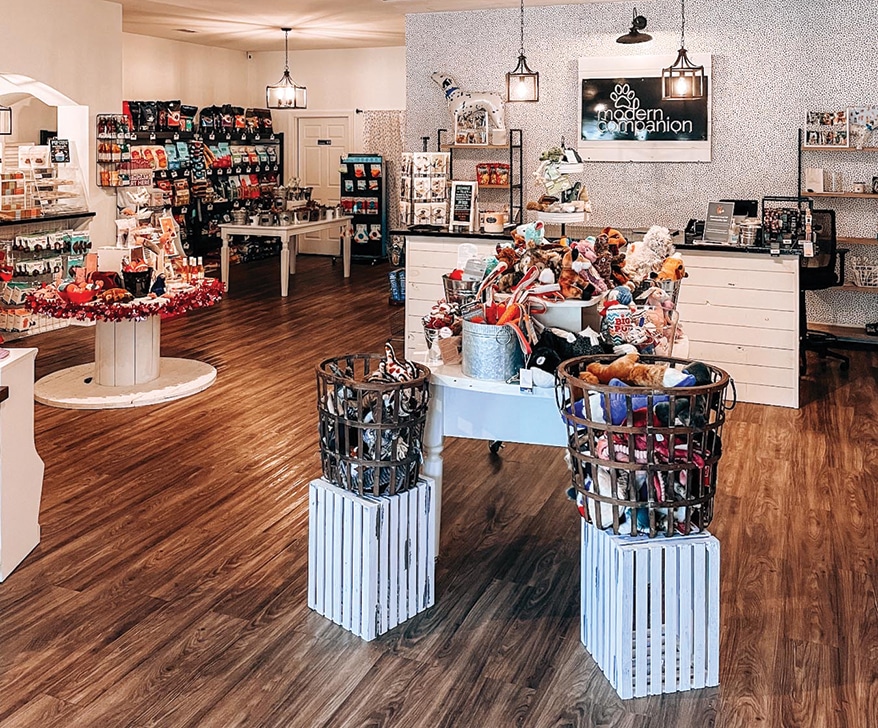
Modern Companion in Chapin, SC, excels at winding customers through the store to see what else they can find.
So, what’s the recipe for being a successful retailer in a small space? She shares these main ingredients:
Clear traffic aisles to the back. “The path can weave back and forth, but there needs to be good visual and physical access throughout. Without it, customers instinctively hesitate to make their way deeper into your store.”

Lyn M. Falk — She loves helping small pet stores acheive big success through design.
Uniform fixtures. “All wood, all metal, etc., or complementary materials within the same aesthetic. Retailers starting out often beg, borrow and buy used fixtures, and/or get free vendor fixtures. This leads to a diluted brand and adds to the visual busyness of a store. By being thoughtful about the look of the fixtures, you will draw customer eyes to the products, not the fixtures.”
No merchandise on the floor. “To avoid looking sloppy and clogging the aisleways, keep merchandise to the bottom shelves of floor fixtures and at a minimum of 12 inches above the floor when using slatwall panels. Put out only the amount of inventory that will fit on your floor and wall fixtures. It’s called ‘critical mass,’ not ‘overloaded mass!’”
Product categories separated by fixture(s) and with signs above. “These signs will help customers quickly see all of the major types of merchandise sold in your store from a distance and guide them to what they’re looking to buy. Simple, easy-to-read signage can go a long way toward helping a person navigate a ‘full’ store.”
Focal point displays throughout. “These displays promote a certain line and/or celebrate a theme/season. They are thoughtfully put together, often have props, and provide visual breaks among full fixtures and walls. Without these focal points, the brain finds it difficult to focus on any one thing in your store. Start with a lower display toward the front and build higher toward the back. For instance, a nesting table just inside the entrance, then an endcap display farther in, and finally, a wall display above the fixtures in the back would be three good focal points in a small store. You’ll quickly see how customer feet follow their eyes.”

Final thoughts from Falk: “With a smaller store, it’s important to purchase for a set number of product categories that fit well within the existing space. You may have to wait until you’ve reached a higher level of success and can afford more space to add lines. Keeping a store clean and tidy, with fixtures uniform and well-merchandised, and installing easy-to-read department or product-category signs will make a big difference in how customers see, interpret and shop your store. And when customers can see more, they buy more.”

So many of you said you struggle to build this area of your business. We asked Jennifer and Allen Larsen of Firehouse Pet Shop in Wenatchee, WA, to share what they’ve learned while growing their cat department. Thanks to an expansion in November 2020, kitty customers now have 1,100 of the store’s 7,700 square feet all to themselves. These sales make up 20% of total revenue and have grown 48% on average year over year since the upgrade. The Larsens recommend these strategies to see your cat sales grow.
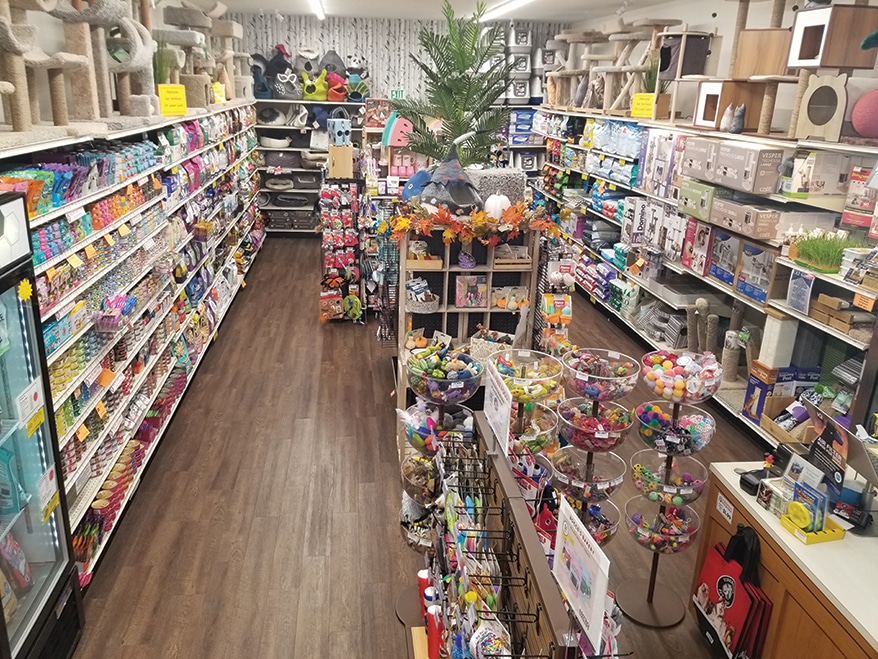
Kitty customers at Firehouse Pet Shop have a department all to themselves.
Have a true cat department. “Immediately after the expansion, we heard from several customers that they loved having their own area and space and not having to go through all of the dog stuff. Our cat raw, for example, is in its own freezer next to cat food, not on a shelf or two mixed in with dog. Cat customers want variety, fun and unique products, and to feel like they matter.”
Buy, merchandise and price with cats and their people in mind. “They shop cans specifically, so we have them all together and offer a large assortment as cats are picky. We also offer a ‘Buy 10, Get 1 Free’ with mix and match, which really brings in that customer. We rotate toy brands constantly and carry some that are inexpensive, but also some pricey ones from Faire that are unique and not in other local stores. We carry a large assortment of cat trees and put our nicest and largest out on the sidewalk daily, which really grabs people’s attention driving by. Our cat tree selection has brought in several new customers as only the plain ones are at big-box stores. Lastly, we found that dropping our margin on litter, for example, to better align with grocery and big-box, boosted sales. We now have 12 feet of tall litter walls, and it moves very quickly. Our food we keep as low as we can: 25 on big bags, 27 on medium, 30 on small. We’ve noticed some stores are much higher margin, and cat customers will shop price.”
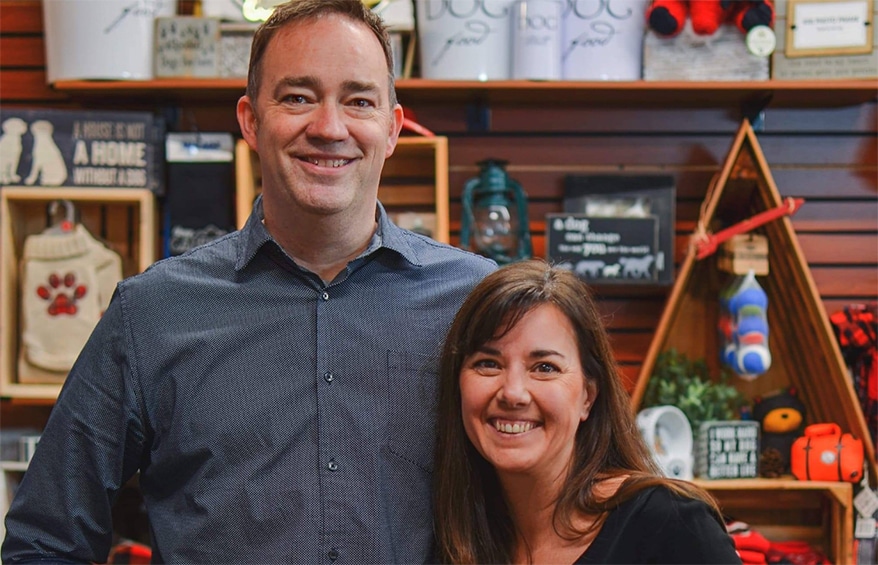
Jennifer and Allen Larsen — They put cats and their people on a pedestal.
Hold cat-centric sales. Many retailers said that customers with dogs and cats only shop for their dogs with them. The Larsens can relate and share how they overcame this particular challenge, “When we first opened, cat customers would shop at the grocery store for cat food but drop $60 to $100 on a bag of dog food with us. We started having a ‘Caturday Sale’ one Saturday and Sunday a month, varying weeks, during which most of the department was discounted. We chose food and treats we wanted to grow, were long on, that were short-dated, etc. Higher-margin items were a steeper discount, food and cans were only 10% to 20% off. People started asking when the next sale was on a regular basis. It got people to try new things, and these became our busiest days of the month.”
Hire cat people. “The bigger piece of the sales growth was educating and building trust between our customers and staff. Once they learn the importance of diet with their dog, they start to realize they have neglected their cat. They eventually have moved to taking equal care. This also comes with having a team equally passionate about cats and their health as dogs. We have several employees who only have cats, and that is their passion.”

ore than a few Brain Squad members, many with nutrition-centric stores, said they don’t feel their brand fully represents their mission. Several also said they struggle with brand consistency throughout their business. NorthPoint Pets & Company in Cheshire, CT, excels in this area, so we asked manager Jenna Harrison to provide insight into the store’s brand as well as the process used to create and maintain it.

Jenna Harrison — Her background in fine arts and merchandising helps keep the store’s brand on point.
“Our brand identity is encapsulated by two key phrases: ‘Fiercely Independent’ and ‘Science-backed nutrition without the hype.’ These reflect our bold and honest ethos,” she says, adding that the store’s foundation lies in owner Nicole Cammack’s studies at the University of Georgia, a five-year doctorate program in comparative biomedical sciences, canine nutrition, and in her international research publications. Both impact not only the store’s customers but also the global pet industry, so the brand needed to resonate with both. With all of that in mind, they chose a compass as the brand symbol.
“NorthPoint stands as a trustworthy beacon in the sea of conflicting information. In the mess of opinions, product promotions and internet advice, finding unbiased and reliable guidance can be overwhelming,” Harrison says. “This is where our emblem, the compass, takes center stage. Our knowledgeable team acts as a guiding force, lighting a path to optimal pet health through personalized interactions with customers and their pets.”
Harrison and Cammack spent nearly a year putting together NorthPoint’s brand, with the help of a marketing agency.
“The essence of NorthPoint had to be effortlessly recognizable across both digital and print platforms. Our aim was to establish a level of visual coherence where our imagery effortlessly embodies the spirit of ‘NorthPoint,’ even without explicit labeling. This seamless recognition serves as a cornerstone in conveying our brand’s message, creating a lasting imprint on our audience’s perception and reinforcing the significance of visual branding in fostering a strong and enduring connection.
Advertisement
“During our discussions with the marketing agency, we highlighted the significance of brand visuals aligning with our core values. Our focus was on selecting colors that strike a balance between being vibrant and inviting, yet also convey sophistication and professionalism.
“To ensure versatile design options, our font choices were carefully considered. We aimed for options that could be used in various applications while maintaining the distinctiveness we wanted. Ultimately, we chose three fonts that encompassed all these aspects seamlessly.
“In addition to our printed materials, we’ve incorporated a softer touch with hand-written signs. These include monthly sale shelf-talkers inside the store and two chalkboard sandwich boards on the sidewalk. These elements play a key role in striking a balance within our aesthetic, showcasing our human touch, and highlighting our identity as a proud, independent small business.”

A compass serves as NorthPoint Pets & Company’s symbol. It stars in all elements of the brand.
The brand book that resulted from this process not only captures core values, it serves as a comprehensive guide.
“It encompasses everything from colors, typography and logos to imagery, and delves into how these elements come together across various touch points — our website, social media, print materials, emails, and even our team’s apparel.
“The brand book dives deep into specifics. For instance, our color guidelines get really detailed — we’re talking Pantone numbers, careful color proportions and even transparent color samples. We’ve got three primary colors and four tertiary ones, each with sample transparent applications, and we’ve given each color a fun NorthPoint Pet name, such as ‘Bulldog Blue.’ We go equally in-depth with font combinations, heading and subheading hierarcies, and logo usage. The book includes stacked, horizontal or the standalone logos.
It really covers every visual detail you can imagine.”
Harrison points to this detailed book as one of the business’s most valuable assets and recommends any store have one.
“It sets clear design parameters to ensure visual consistency in and out of the store. It also streamlines project management, as it’s simple for us to share the brand book with graphic designers. We are very pleased with the final result.”
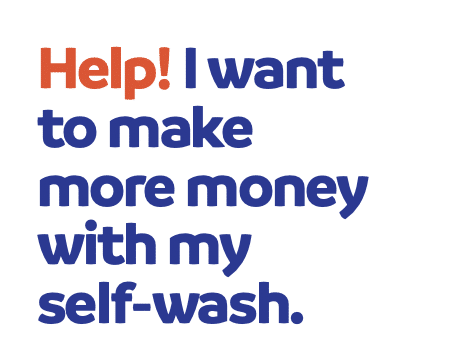
Lucky for those with this goal, several Brain Squad members do quite well with their self-wash stations. We’ve rounded up here top tips and ideas on how to increase revenue in this area.
Keep customers on schedule. If you struggle with getting pets and their people out of your self-wash on time, Alison Schwartz of All Pets Considered in Greensboro, NC, shares how she manages it for her four stations.
“I purchased four timers from Amazon that are different colors and got two sets. The customer gets one timer to take with them to the tub, and we keep one behind the counter. This allows us to track time and keeps the customer aware. It has helped solve the issue of people taking too much time!”
Create add-ons. Schwartz charges extra for towels above and beyond the ones included in the price: $1 each, which more than covers the 50 cent cost from the laundry services she uses. She also offers Furmintor and Lick Mat (with included peanut butter) rental at $5 each.
Give baths away. Many retailers with successful self-wash departments say they offer free baths whenever they can, from adding a coupon to adoption packages to handing them out at festivals. Sheila Spitza of Wet Nose in Geneva, IL, partners with neighbors during the holidays on such marketing efforts.
“Our shopping center has a coupon mailer that’s sent out to area residents and promoted on their social/website. Our coupon was good for a free self-wash visit, limit one per household, subject to availability. WOW! Not only was it successful for increasing bath business, but it also brought a lot of new clients into the store that had never visited us before. The promo ran from Black Friday through December 15, leaving the last 10 days before Christmas open for paying clients.”
She adds, “Right now we’re bringing in over $3,600 per month and growing.”
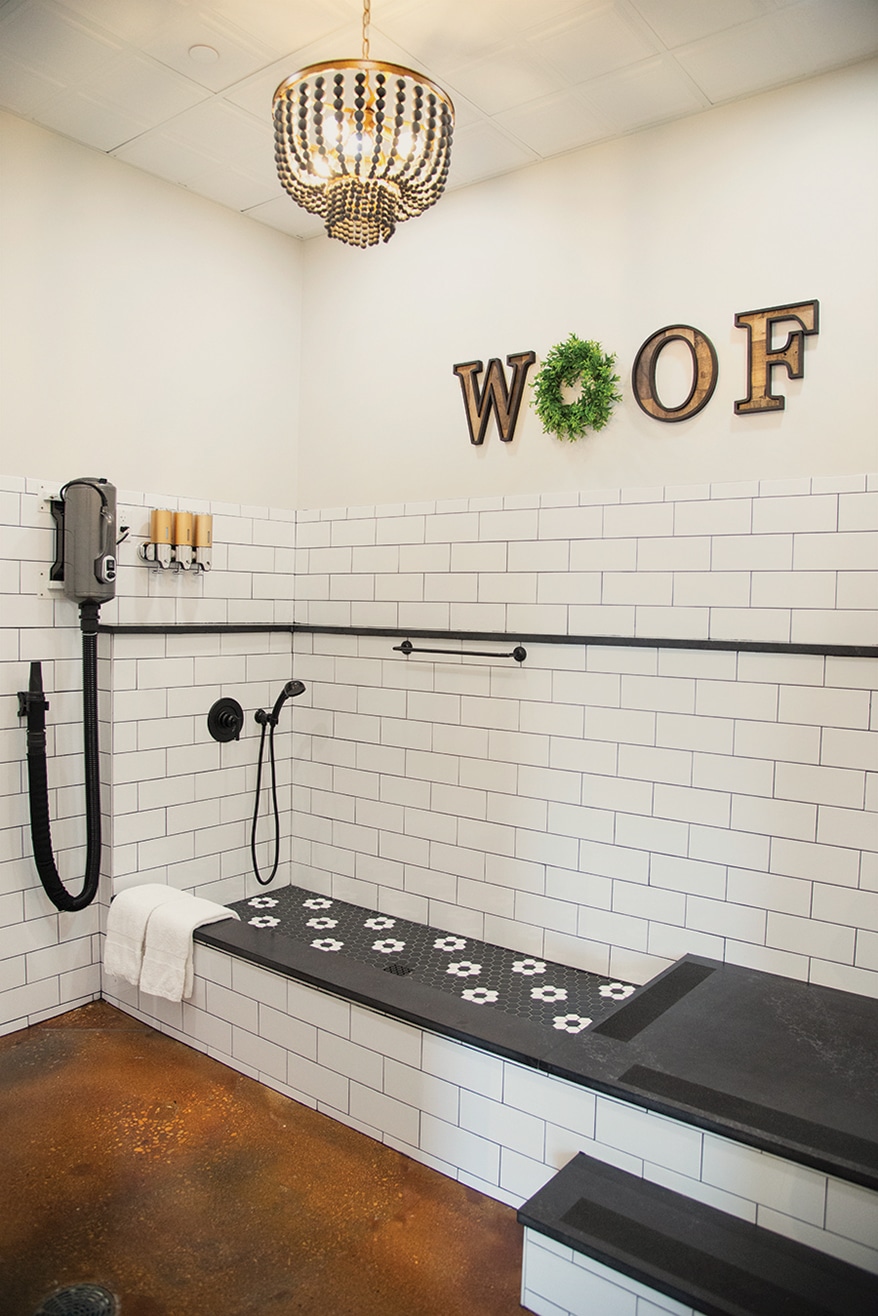
Customers at Wet Nose may find the self-wash at the store to be more stylish than their bathrooms at home!
Offer a package deal. Stacy Busch-Heisserer of Busch Pet Products & Dog Wash in Cape Girardeau, MO, began offering self-wash 10 years ago. In 2022, her five stations brought in $64,000. She points to the variety of packages available to customers as a key to her success.
“We offer a Summer Pass that’s insanely popular. From Memorial Day through Labor Day, it’s only $35 for unlimited baths ($20 for each additional dog in the same family). We sell them well into July, and we hit our all-time high on sales this year (235 total = 190 regular and 45 additional dogs, which made us over $7,550 this summer). While some really get their money’s worth out of the passes, many never use them to their full potential.”
She also gets into the holiday spirit with self-wash.
“Every December, we have a 12 Days of Christmas promotion where we pre-sell bath packages,” Busch-Heisserer says, adding that each package level comes with an increasing number of free baths. “It’s an awesome way to put money in my pocket during the holidays and customers get more for their money!”
Don’t hesitate to say ‘no’. Keith Miller of Bubbly Paws self-washes across the country — which will total more than 30 in 2024 — offers this advice to those who may be too accommodating, thus limiting their self-wash revenue.
“It’s OK to be selective and not always accommodate every customer’s needs. We had one lady who wanted to come in, do a self-service wash, and then groom the dog in our customer drying room. Well, turns out she was a professional groomer and was charging someone for that. Yes, we want to try to go above with customer service, but sometimes you just need to say no.”
Advertisement